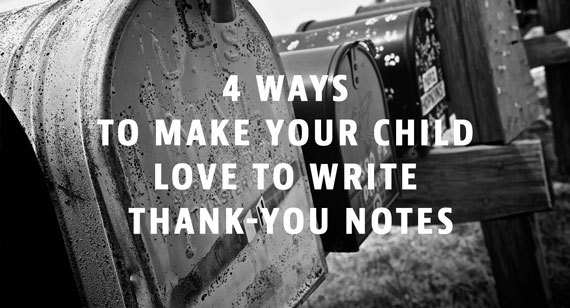If you've ever tried to learn a second language in your 20s or beyond then there is a good chance you've added your two cents to the common complaint: "I wish I had learned this language when I was younger! It would have been so much easier!" There is scientific research to support the refrain -- a child's mind goes through periods where it is more able to learn and map different types of information. After age 10 it becomes more difficult for us to learn and retain new words. The same logic applies to all sorts of things; this fairly obvious but critically important to remember as we raise our children.
When children are young we have a once-in-a-lifetime opportunity to foster and facilitate certain habits of mind. I'm particularly interested in gratitude because I believe that a grateful outlook and psychological framework can lead most surely to a happy life. Thank-you notes are among the most action-oriented and meaningful ways to help a child really understand what it means to live gratefully. Here are four steps to help and encourage children write to thank-you notes and live gratefully:
- A Rule: Whenever your child receives a gift, make a rule of having him/her write a thank-you note for the gift before they can use it. This will procure an instinct for gratitude.
Author Matt Richardson is the co-founder of Gramr Gratitude Co. Gramr provides a subscription service for beautiful and original thank-you notes, their goal is to start a movement for gratitude and grateful living -- learn more about their vision of a more grateful world here.
